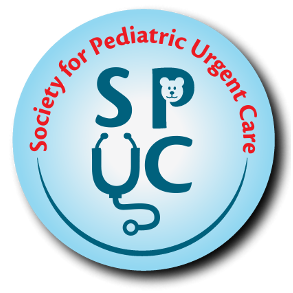ALERTS
FINDINGS NOT TO MISS
Sepsis
Meningitis
Intussusception
IMMEDIATE CONSIDERATIONS
Concern for the above should prompt immediate transfer
Consider antibiotics
AGE CONSIDERATIONS
Infants under < 3 months at highest risk for sepsis/meningitis
Intussusception 3mo-3 years
DIFFERENTIAL DIAGNOSIS
Broad and ranges from serious to benign
BENIGN
Anal Fissure
Colic
Corneal abrasion
Feeding Difficulties
Gas
Hair tourniquet
Hernia (unincarcerated)
Milk protein allergy
Nasal congestion
Otitis Media
Oral thrush (severe)
Gastroesophageal reflux
SERIOUS/LIFE-THREATENING
Abusive head trauma(AHT)/child abuse
Congestive heart failure
Congenital heart disease
Supraventricular tachycardia (SVT)
Drugs or drug withdrawal
Incarcerated hernia
Infection
Sepsis
Meningitis
Respiratory distress
Urinary tract infection
Injury
Intussusception
Metabolic disturbances
Testicular/ovarian torsion
EVALUATION
HISTORY
Full history, including social history
Is crying intermittent or persistent?
PHYSICAL EXAM
Complete physical exam is essential
Remove all clothing, including diaper
Infants who are lethargic or remain persistently irritable during your exam are more likely to have a serious cause for their crying
Vital signs
Fever, tachycardia or tachypnea
- markers of infection/sepsis, cardiovascular or respiratory disease or metabolic derangements.
- Normal ranges vary by infant age, understand what is considered out of range.
General: lethargic or asleep, but arousable? Crying or generally fussy?
Skin:
- Remove the diaper and all of the clothing
- Careful skin exam for any swelling or evidence of cellulitis/abscess
- Skin mottling and acrocyanosis can be normal in newborns, but in the presence of other physical exam findings, such as fever or lethargy, they may be markers of shock.
- Petechiae and purpura are late findings in sepsis.
HEENT:
Head:
- Fontanel: fullness/bulging (concern for meningitis – late sign )
- Skull: swelling or bogginess (concern for skull fracture).
Ears: otits media
Eyes : Corneal abrasion/Foreign Body
Mouth: thrush or oral lesions – use a tongue depressor
Cardiovascular: Congenital heart disease
- Assess perfusion, peripheral pulses, heart rate, and presence of a heart murmur
- Poor feeding, tachypnea/sweating during feedings may indicate congenital or acquired heart disease
Respiratory:
- tachypnea, wheezing or grunting may indicate respiratory or cardiovascular diseases.
GastrointestinaI: intrabdominal process, intussuception,
- Palpate: abdominal masses, abdominal distension, abdominal tenderness, and tenseness.
- Perform a guaiac stool test for occult blood
Genitourinary:
- Hernias or testicular torsion: Remove the diaper
- Perirectal abscess or anal fissure: Lay in supine position, flex the hips to visualize anus
Musculoskeletal: musculoskeletal trauma, hair tourniquet
Palpate all long bones and clavicles
Check for swelling, bruising or erythema
Does crying increase when you move an extremity
Will child bear weight?
Look at all fingers and toes to be sure there are no tourniquets.
Neurologic:
Is the child consolable at all?
Paradoxical irritability (crying is made worse when holding to try to console) can be seen with meningitis.
DIAGNOSTIC TESTS & INTERPRETATION
Guided by history and physical
Majority of diagnoses can be made without further testing
Colic is a diagnosis of exclusion
Lab Tests
CBC, blood and urine culture, lumbar puncture if concern for infectious etiology
Lab Tests
KUB for abdominal concerns including distension
Xray for musculoskeletal concerns
MANAGEMENT
TRANSFER/ADMISSION CONSIDERATIONS
Immediate transfer for sepsis/meningitis
If not immediate cause and infant remain irritable, consider transfer for observation of infants < 3 months, but certainly less than 28 days
Surgical emergencies: Incarcerated hernia, intussusception, testicular torsion
Fractures requiring transfer
Concern for non-accidental trauma
Anal Fissure – see …
Colic
Corneal abrasion – see …
Feeding Difficulties – see…
Gas – see…
Gastroesophageal reflux – see…
Hair tourniquet – see…
Hernia (unincarcerated) – see…
Milk protein allergy
Nasal congestion – see…
Otitis Media – see…
Oral thrush (severe) – see…
Musculoskeletal injuries – see…
COLIC
- 2-3 hours of excessive crying
- Begins at 6 weeks, lasts to 4 months
- Diagnosis of exclusion
TREATMENT
First Line
Supportive care
Complementary & Alternative Therapies
swaddling, white noise, car rides used with variable success
Gas relief drop or gripe water, often of little benefit
PROGNOSIS, COMPLICATIONS
Self resolves
PROTEIN INDUCED ENTEROCOLITIS
TREATMENT
First Line
Elimination of cows milk and/or soy protein: elimination from nursing mother’s diet as well
Second Line
Amino acid based formula
Supportive
May take up to 1 week for improvement in symptoms and resolution of heme in stool
May have associated esophagitis consider reflux treatment may improve symptoms
Complementary & Alternative Therapies
Gas relief drop or gripe water, often of little benefit
DIAGNOSIS 3
TREATMENT
First Line
Second Line
Supportive
Complementary & Alternative Therapies
Surgery / Other Procedures
FOLLOW UP
Outpatient Referral
Discuss with PCP if available, excessive crying is a high stress situation for families
PCP follow up the following day for well appearing infants
Written instructions should include:
Anticipatory Guidance
Include social support about crying
Include information about precenting shaken baby
Activity, Diet
As tolerated based on diagnosis
Signs and Symptoms to return
Fever, worsening symptoms
PROGNOSIS, COMPLICATIONS
Diagnosis dependent
REFERENCES
ADDITIONAL RESOURCES
SEE ALSO (TOPIC, ALGORITHM, ELECTRONIC MEDIA ELEMENT)
CODES
ICD9
PUBLISHER WILL ENTER
Snomed
PUBLISHER WILL ENTER
